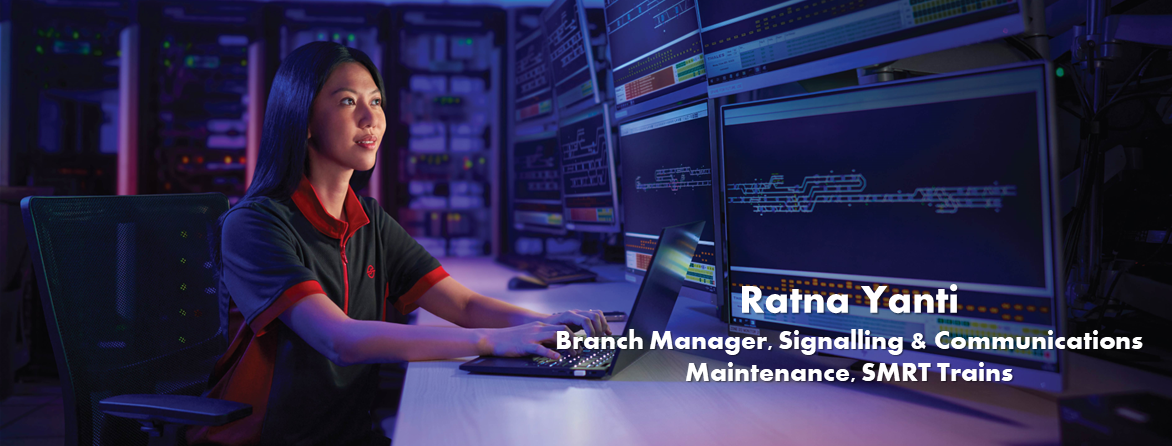Improving Rail Reliability With Data

Q: What intrigued you to pursue a career in the Public Transport industry?
A: I always think that the public transport system in Singapore is very convenient and was curious about the work behind it and believe it will be a rewarding career for me.
Q: Share with us what you do as a Signalling & Communications Engineer.
A: As a Signalling & Communications Maintenance Engineer, I work closely with my colleagues to resolve issues, rectify faults and follow-up works. Some of these works include troubleshooting and working on the improvement of platform screen doors, to bolster their performance and enhance our trains’ reliability.
Our team also ensure that preventive and corrective maintenance of railway signalling systems and its associated equipment are conducted. Through predictive technology, we collect data and conduct trend analysis, so that equipment performance can be monitored closely, and maintenance work can be prioritised.
Q: What are the opportunities that the industry offers to graduates with technical or engineering qualifications?
A: There are various engineering roles in this industry, from handling and resolving ground maintenance and technical issues, improving existing processes in the system, managing projects. Engineering thinking and knowledge are definitely required in the industry.
Q: What keeps you motivated in your role?
A: It’s the sense of achievement when problems are solved, knowing that my role and work contributed to the service and reliability of public transport. I like that my work is very dynamic, not limited to only technical engineering, but it involves a lot of communication, planning and management skills. This makes the work challenging and interesting at the same time.
Q: Share with us any achievement or memorable moment you have experienced in your work.
A: One notable achievement was my time managing Signalling Field Services maintenance team during the challenging transition period of SMRT's North South-East West Line re-signalling. This critical phase demanded meticulous maintenance planning for both the old and new systems, while simultaneously preparing the team for the operation of the new system.
It was a critical period in ensuring a seamless transition by continuously engaging and motivating the team under my charge and making sure they are ready for the new system. Our team in maintenance work closely together, overseeing various aspects of maintenance logistics, including the preparation of special tools and testing equipment, the procurement and management of maintenance spares, ensuring the maintenance management system was up to date. Effort was paid-off when the new system was successfully running and our ground maintenance staff are well prepared for the new system.
Q: What are the challenges in your role, and how do you overcome them?
A: At the beginning of my career, it was a challenge leading a team of experienced technical professionals. I knew that I had to quickly build my confidence and gain trust from the team, by engaging them, working closely with them on the ground, addressing concerns and providing unwavering support.
Moving forward to my role today, it involves the challenge in managing various internal and external stakeholders, long-term service support contract, various aspects of continuous improvement work. Maintaining good communication and collaboration relationship is important in resolving organisational and technical challenges as well as getting work done in time.
I strongly believe in a positive and cohesive team work environment, valuing every team member, with collaborative and inclusive leadership style.
Q: As you look at the industry's future, what excites you the most?
A: Many upcoming MRT lines connecting different parts of Singapore and making every area accessible to public transport.
Q: What would you say to someone considering a role in the industry?
A: I would say this is an industry for everyone looking for a challenging yet satisfying career. It is not just a job, but a career that makes a difference in Singapore’s transport system.

